Irish spotting is a type of white spotting pattern.
Both piebald and whitehead can cause phenotypes that closely resemble Irish-type markings.
What Is Irish Spotting?
Irish spotting is a white spotting trait that causes a distinct pattern.
Typical Irish markings include some white on the chest, some white on the underbody, four white paws, and a white tail tip. Sometimes it adds a white collar, and maybe some minor amount of white on the muzzle just around the nose, and a thin white stripe or snip that does not extend beyond the forehead.
Overall, true Irish spotting tends to be very predictable and quite symmetrical.

Irish spotting on its own doesn’t add that much white.
And there are just a few dog breeds that get their white markings from Irish spotting alone.
If you want to see Irish markings in action, your best bet is to look at Shelties, Collies, Basenjis, and some of the Scandinavian hounds such as Finnish Hound or the Swedish Drever.



Irish-Type Markings
There are many dog breeds whose breed standard calls for a “tuxedo coat” or “mantle pattern“. But by far not all of these dogs truly get their markings from an Irish spotting trait.
That is, the terms “Irish spotting” or “Irish markings” are also used by dog breeds that come with any kind of white trim pattern that just resembles true Irish spotting close enough.
See, dogs with moderate piebald, as well as moderate whitehead patterns, tend to produce markings that can look very very similar to Irish markings. In some cases to the point where it can be hard to determine the cause of the white pattern just by looking at the one dog in front of you.
How do these other patterns work?
Piebald (sP) takes away pigment from the bottom upwards.
As the dose increases, the pattern gradually progresses from underbody white to a cow pattern. The pigment on the head is the last to be removed.


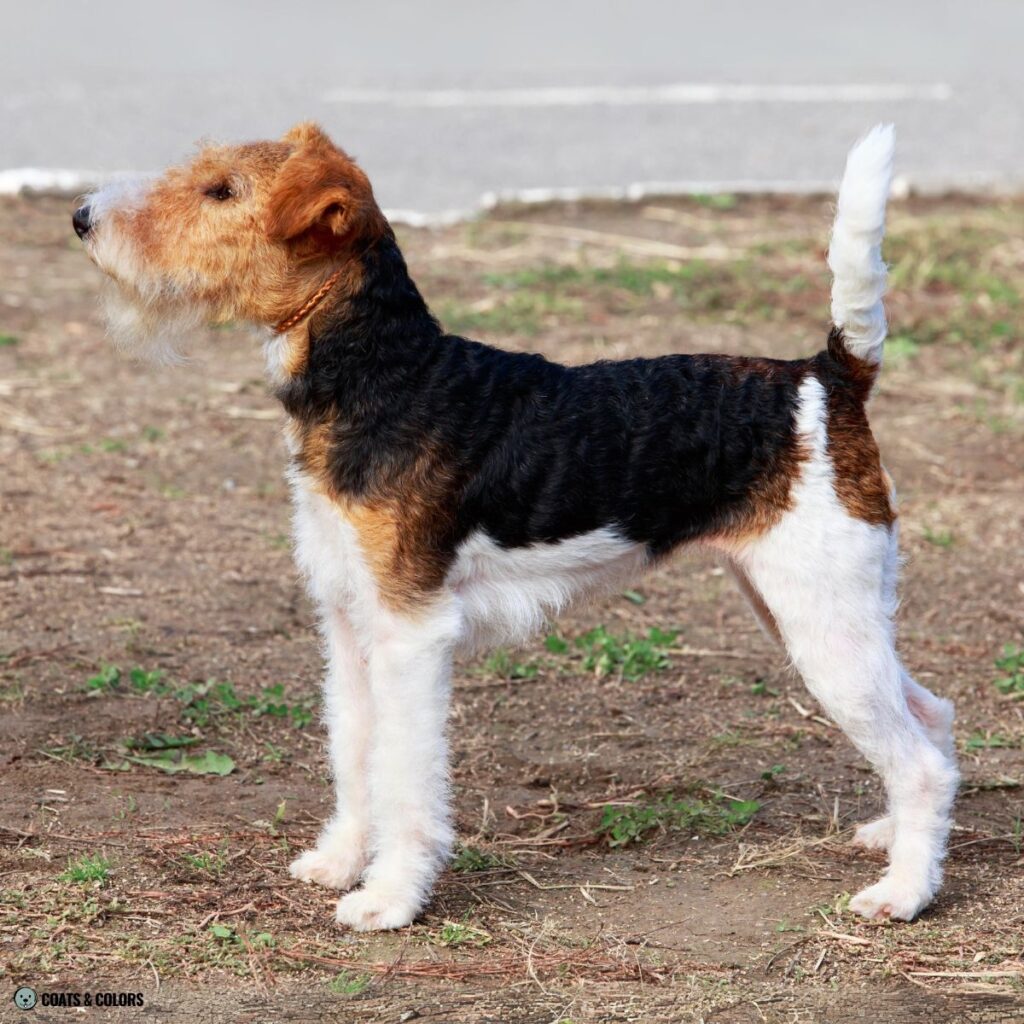



Whitehead takes away pigment from the front rearwards.
Patterns progress from chest white to head white and white paws to body white.






Both of these patterns are likely to have plus and minus modifiers so that breeders can select a more or less “controlled version” that meets the requirements of their respective breed standards.
Selecting for specific patterns can fix breeds for a certain “on average” phenotype. However, both whitehead and piebald also are a lot less predictable regarding the amount and distribution of white.
But both spotting patterns have a “sweet spot” where they resemble an Irish spotting pattern.
Many Irish-marked dogs are actually piebald carriers (S/sP).
A “pseudo-Irish pattern” can be observed in a whole lot of breeds from “flashy” Boxers or Bull Terriers or Frenchies to “tuxedo” Poodles or “mantle” Great Danes. Or Spaniels. Or sighthounds. Or toy breeds.



Other dogs get their fake Irish markings from a moderate dose of whitehead.
This can be observed in Bernese Mountain Dogs or Boston Terriers and many bully-type dogs.



And the majority of Australian Shepherds and working Border Collies, and likely also Bearded Collies and Corgis seem to express a combination of Irish spotting plus some whitehead.



The differences between real Irish spotting and Irish-type markings can be very subtle.
But as soon as a dog has any kind of white spotting that extends beyond Irish markings, he has something else going on. This can either mean that he has something else on top of his Irish markings. Or that his white pattern comes from something else entirely.
For example, a real Irish pattern does not add extended muzzle white with white beyond the corner of the lips or wide and crooked blazes or large irregular patches!
Anny added white beyond Irish markings is caused by other traits, most often a dose of whitehead.




And some dogs give away that they are not “just Irish” by a lack of white they should have if they were truly Irish-patterned. This can be observed in dogs that have a lot of white on their front but still no white on their paws.
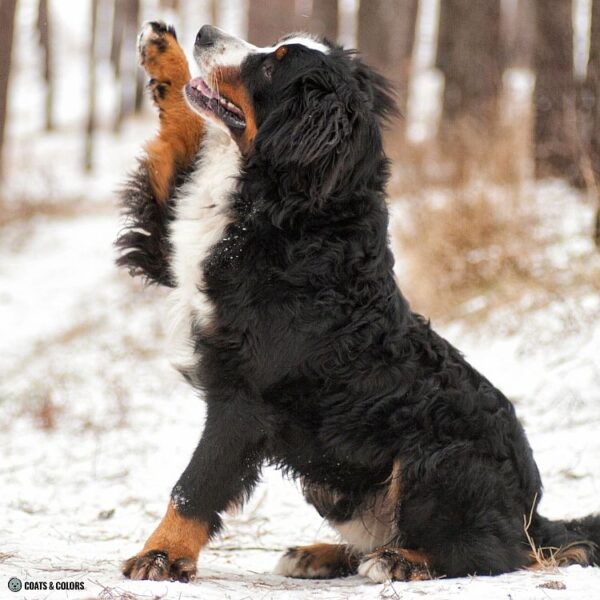
In true Irish spotting, the migration of pigment cells is not impaired to the point where dogs get blue eyes or are at risk of deafness. However, both can happen with moderately strong versions of piebald or whitehead!
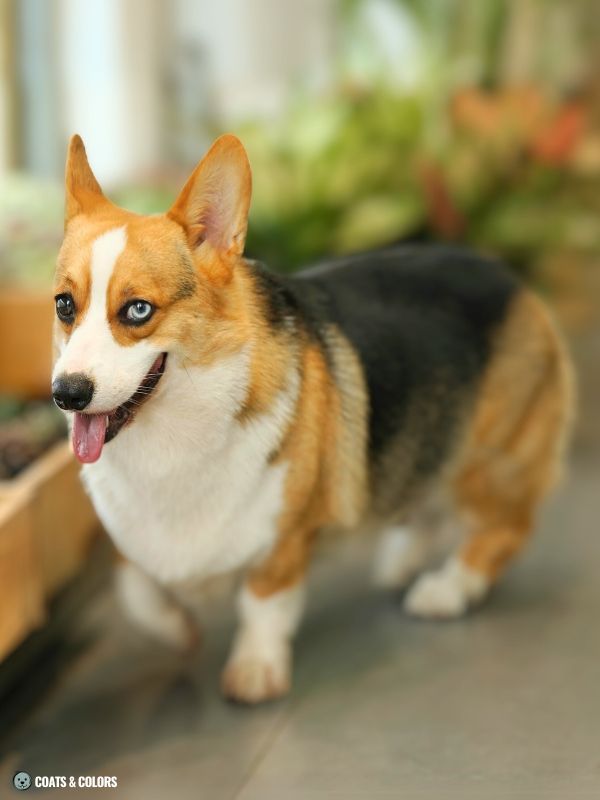
Many dog breeds with real Irish markings also have the whitehead and/or piebald trait in their gene pool. So it can be difficult to tell which trait has caused what area of the white markings.
It can be very helpful to study a dog’s pedigree or to look at his relatives to get a better feeling for what white patterns run in his family.
This leads us to our next point, the inheritance of Irish spotting patterns.
Genetics Of Irish Spotting In Dogs
Genetically, Irish spotting is not the same as piebald or whitehead.
That is, dogs that have neither piebald (S/S) nor whitehead can still have Irish markings.
Irish spotting is a separate trait caused by something else.
What sets Irish spotting apart from the other known white spotting patterns is that it “breeds true“. Parents with Irish spotting will have puppies with the same kind of symmetrical minor white pattern.
You can breed generation after generation of Shelties or Collies that will all have the same amount of white and almost identical markings.
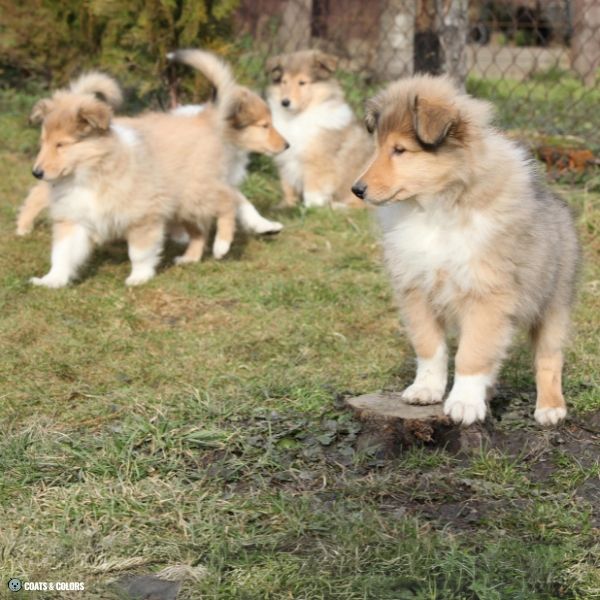
That very likely makes Irish spotting recessive to solid.
All truly Irish-marked dogs seem to be homozygous or “fixed” for this trait.
It seems to require to come from both parents to express in its full form. Many Collies, or example, only tend to produce no to little white when paired with a solid dog.
And this is not true for the other white spotting traits. Bot piebald and whitehead show incomplete dominance, causing a dose-dependent expression:
One dose causes some white. Two doses may cause a good deal more.
If you breed two piebald carriers (S/sP x S/sP ), their puppies can be either solid (S/S), might have moderate white pattern (S/sP), or have lots of white (sP/sP).
That’s why breeders don’t pair two flashy Boxers (S/sP) if they want to avoid fully white puppies.



The same segregation happens with heterozygous whitehead pairings.
If you breed from two “whitehead-factored” dogs (+/-), puppies might end up with a lot less (-/-) or a lot more white (+/+) than their parents.
And too much white on the head might not only look weird but cause an increased risk for deafness in puppies born from such a breeding.
This is why sensible breeders do not deliberately mate two dogs with super wide blazes, they know they may end up with white-faced puppies.


But no one knows which gene(s) or modifiers control Irish spotting in dogs.
Some still believe that Irish spotting was caused by an allele at the S locus they call si.
This goes back to the first description of the S locus in dogs by Clarence Little in 1957 who suggested that all white spotting patterns were on the same locus.
However, this does not hold up with the current understanding of white markings in dogs. Still, the si label is often used as a placeholder for the Irish spotting trait until people figure it out.
Some believe that there might even be several different kinds of Irish spotting. Or that Irish is actually multigenic and caused by a combination of different modifiers.
By the way…
The term “Irish markings” goes back to Leonard Doncaster who in 1905 described a similar white spotting pattern in rats with a white chest, white feet, and a white tail tip. Now you know.
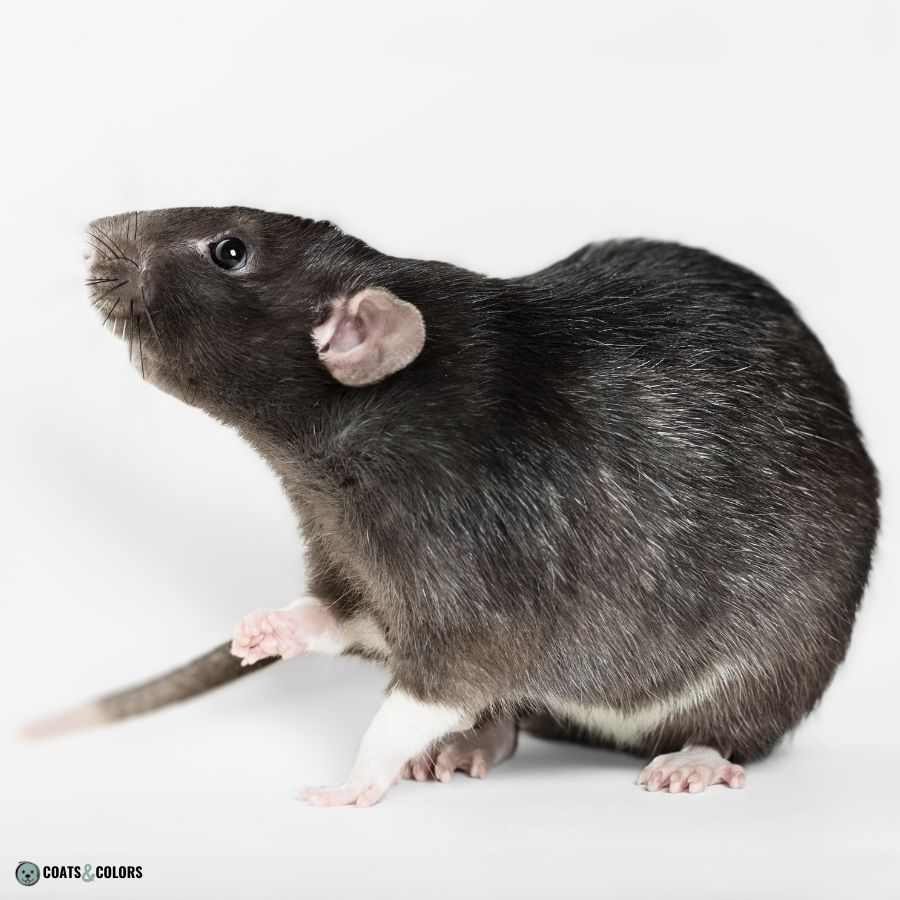

Hi! I’m Steffi. I am a biologist and a big time dog nerd. You are curious about coat color genetics? You’ve come to the right place! Read more.







